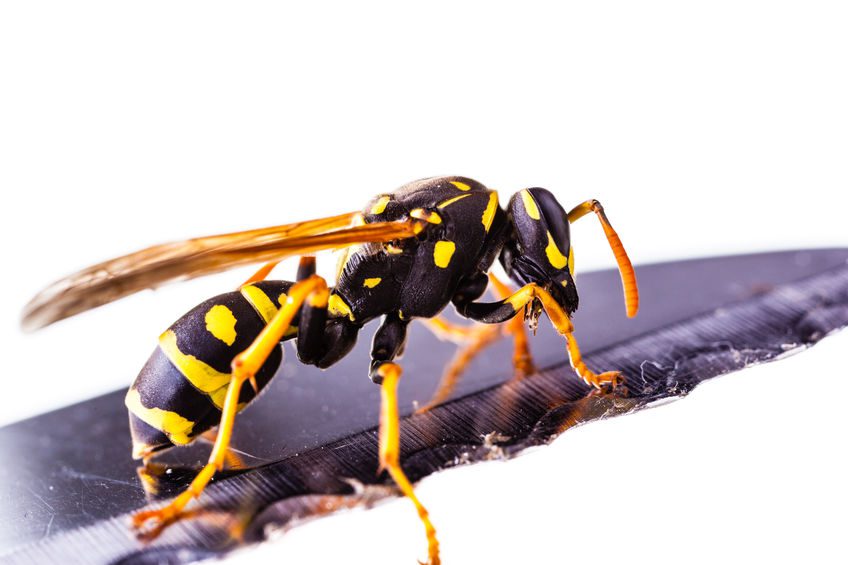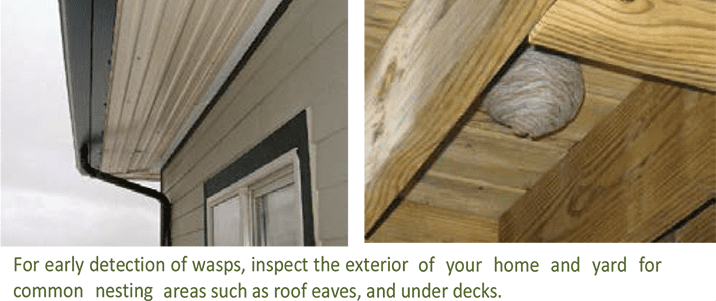Identification and Life Cycle
The three more common types of stinging insects are Paper Wasps (Polistes dominulus), Bald Faced Hornets (Dolichovespula maculata), and Yellow Jackets. Yellow jackets are either aerial- nesting (Dolichovespala arenaria) or ground-nesting (Vespula maculifrons).
The Paper Wasp, is 1/2 to 1 – inch long, and is reddish brown to black in color with yellow rings around its abdomen. Its nest is supported by a single stalk that can resemble an upside down umbrella.
The Bald-Faced Hornet, is closely related to the yellow jacket. It is 5/8 to 3/4 – inch long and is mostly hairless with black and white patterns on its face, thorax, and abdomen. Nests are typically found in high locations of 10-12 feet.
The Aerial-nesting Yellow Jacket, is smaller in size than the hornet. It has a hairless body with a black abdomen and yellow stripes and markings. Its nest location, size and shape is similar to the bald faced hornet. The Ground-nesting Yellow Jacket, is 1/2 to 5/8 – inch long and is mostly hairless. It has black with bright yellow markings on the sides of its head, thorax, abdomen and legs. This type of insect builds it nest in the ground or at ground level in fallen tree stumps.
All three species have similar life cycles and nesting practices; In early spring, a queen bee emerges from hibernation, and builds her nest. She first raises workers that will collect food while she stays behind to lay eggs. At the end of summer, the colony produces males and queens that then leave the nest to mate. After mating, the new queens hibernate in the ground during winter and the remaining colony dies out. The nest site is never reused.





Comments are closed.